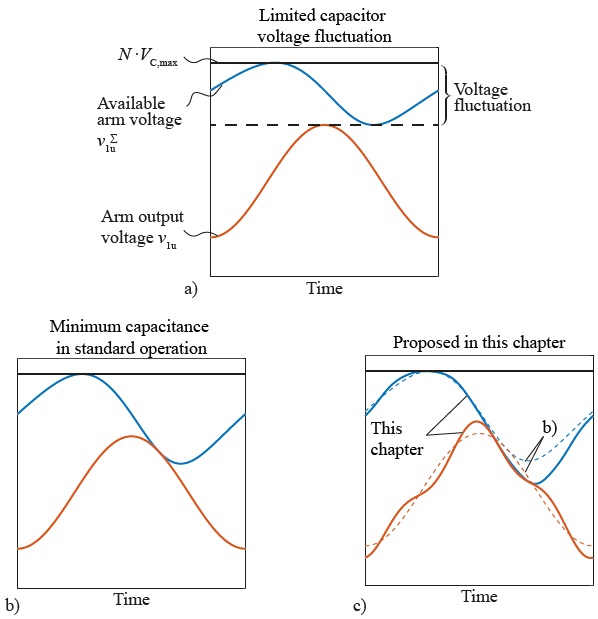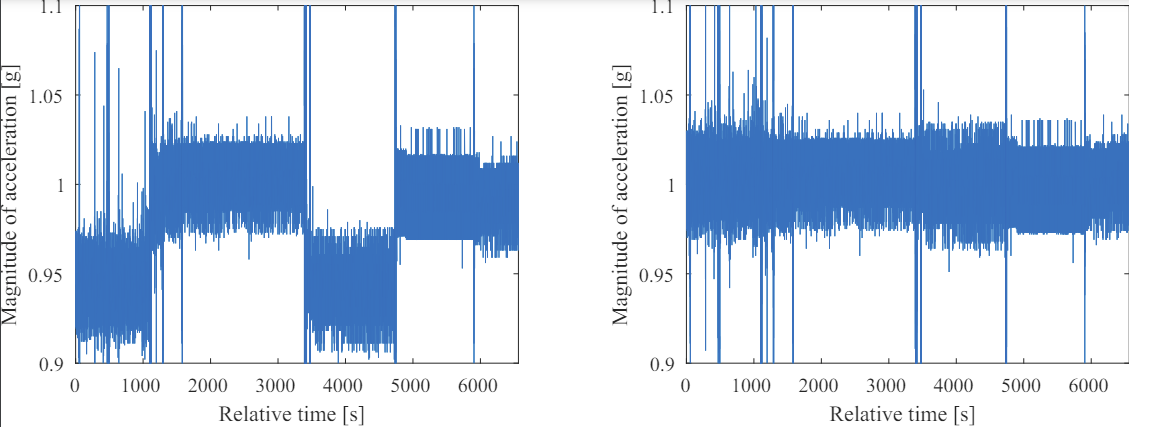Wirelessly Powered Networks: Algorithms, Applications and Technologies
Submission Deadline: 31 October 2018
IEEE Access invites manuscript submissions in the area of Wirelessly Powered Networks: Algorithms, Applications and Technologies.
Wireless Power Transfer (WPT) is, by definition, a process that occurs in any system where electrical energy is transmitted from a power source to a load without the connection of electrical conductors. WPT is the driving technology that will enable the next stage in the current consumer electronics revolution, including battery-less sensors, passive RF identification (RFID), passive wireless sensors, the Internet of Things and 5G, and machine-to-machine solutions. WPT-enabled devices can be powered by harvesting energy from the surroundings, including electromagnetic (EM) energy, leading to a new communication networks paradigm, the Wirelessly Powered Networks.
While recent advances in wireless utensils appear to be unlimited, the dependence of their operation on batteries remains a weakness, mainly because batteries come with a limited lifetime and require a fast charge time to achieve continuous operation. This is where the technologies of WPT become useful, bringing together wireless energy and data transmission. WPT technologies substitute the traditional powering concept, where a cable or a battery is connected to the wireless device, by the transmission of energy over the air in an efficient way to power-up the device.
Wirelessly Powered Networks have recently evolved into a very active research field, as well as a topic of rapid technological progress, emerging practical developments and standardization activities. However, a solid foundational, technological, and applied background is still necessary for Wirelessly Powered Networks to achieve their full potential. The provisioning of relevant technological models, algorithmic design and analysis methods, networking principles, circuit and system design, and application methodologies is a challenging task. This Special Section in IEEE Access invites academic and industrial experts to make their contributions on Wirelessly Powered Networks. It will selectively span a coherent, large spectrum of fundamental aspects of WPT, and will focus on three main thematic pillars and relevant themes: Algorithms, Applications and Technologies.
The topics of interest include, but are not limited to:
Algorithms
- Optimization and approximation algorithms (mobility/energy/data management)
- Joint operation scheduling (routing, data gathering, ambient harvesting)
- Precise algorithmic models and efficient distributed protocols
- WPT devices deployment
- Safety provisioning through EM radiation control algorithms
- Peer-to-peer and crowd charging algorithms
- Algorithms for simultaneous wireless information and power transfer (SWIPT)
Applications
- Medical implants and wearable devices
- Automotive technology and electric vehicles
- Mobile communications, wireless sensor networks and UAVs
- Spacecraft engineering
- Home/Industrial appliances
- Standardization, regulations and biological effects
- Solutions for SWIPT
Technologies
- RF energy harvesting, rectennas and rectenna arrays
- High-frequency rectifying circuits, power transmitters and devices
- Near-field (inductive, resonant) energy transfer
- Microwave transmission and beaming
- Novel materials, fabrication techniques
- Energy storage elements, RFID-related electronics and self-powered sensors
- Measurement and characterization approaches for WPT components
We also highly recommend the submission of multimedia with each article as it significantly increases the visibility, downloads, and citations of articles.
Associate Editor: Theofanis P. Raptis, National Research Council, Italy
Guest Editors:
- Nuno Borges Carvalho, University of Aveiro, Portugal
- Diego Masotti, University of Bologna, Italy
- Lei Shu, Nanjing Agricultural University, China / University of Lincoln, UK
- Cong Wang, Old Dominion University, USA
- Yuanyuan Yang, Stony Brook University, USA
Relevant IEEE Access Special Sections:
- Energy Efficient Wireless Communications with Energy Harvesting and Wireless Power Transfer
- Exploiting the Benefits of Interference in Wireless Networks: Energy Harvesting and Security
- Energy Harvesting and Scavenging: Technologies, Algorithms, and Communication Protocols
IEEE Access Editor-in-Chief: Michael Pecht, Professor and Director, CALCE, University of Maryland
Paper submission: Contact Associate Editor and submit manuscript to:
http://ieee.atyponrex.com/journal/ieee-access
For inquiries regarding this Special Section, please contact: theofanis.raptis@iit.cnr.it
Multi-Function RF Components for Current and Future 5G Wireless Communications
Submission Deadline: 31 May 2018
IEEE Access invites manuscript submissions in the area of Multi-Function RF Components for Current and Future 5G Wireless Communications.
With the increasing demand of wireless connection, wireless communication including 5G is continuously and rapidly growing. Modern wireless communication systems, such as 5G, bring great challenges on radio frequency (RF) sub-systems, which should support multiple RF chains operating at different frequency bands and for various modes. In the 5G RF sub-systems, massive multi-input multi-output (MIMO) antennas are the key technology for the success of 5G in which there are tens or even hundreds of RF chains. In these cases, a large number of transceivers and other components must co-exist within a limited volume. The power consumption and size of RF components are problematic issues, which play an important role in the overall behavior of wireless systems. To solve this problem, extensive work has been done, focusing on the reduction of power consumption and size of various RF components. Although great advances have recently been made, current techniques are still lacking in successful implementations of compact and low-power RF sub-systems fulfilling the increasing demand. It is therefore urgent to develop new techniques which can support the requirements of multiple RF chains in current and future 5G wireless systems.
Fortunately, the technique of co-designing multiple RF operational functionalities to realize multi-function components has exhibited the potential to achieve compact size and low power consumption. Further progress in this area will be made by studying the theory and techniques of multi-component co-design so that the resulting multi-function RF devices outperform the classic cascades of multiple mono-function components.
The objective of this Special Section in IEEE Access is to identify and discuss technical challenges and recent results related to multi-function RF components for current and future wireless communication system with emphasis on 5G. For this Special Section, we seek prospective authors to submit their high-quality original and unpublished contributions, surveys, and case studies on this research area.
The topics of interest include, but are not limited to:
- Co-design of antennas and filters
- Antennas with integrated power combining capability
- Power amplifiers with integrated filtering responses
- Filtering power dividers/couplers
- Filtering matching networks/transformers
- Filtering phase shifters
- Filtering with differential-mode operation.
- Rectennas with integrated design of antenna and rectifier
- Multi-function reconfigurable filters (simultaneous bandpass, bandstop, all-pass and/or all-reject response)
- Novel analysis method for multi-function RF components
We also highly recommend the submission of multimedia with each article as it significantly increases the visibility, downloads, and citations of articles.
Associate Editor: Xiu Yin Zhang, South China University of Technology, China
Guest Editors:
- Roberto Gómez-García , University of Alcala, Spain
- Guoan Wang, University of South Carolina, USA
- Yi Wang, University of Greenwich, UK
Relevant IEEE Access Special Sections:
- Tunable devices for modern communications: materials, integration, modeling, and applications
- Energy Efficient Wireless Communications with Energy Harvesting and Wireless Power Transfer
- Recent Advances on Radio Access and Security Methods in 5G Networks
IEEE Access Editor-in-Chief: Michael Pecht, Professor and Director, CALCE, University of Maryland
Paper submission: Contact Associate Editor and submit manuscript to:
http://ieee.atyponrex.com/journal/ieee-access
For inquiries regarding this Special Section, please contact: zhangxiuyin@hotmail.com
Radio Frequency Identification and Security Techniques
Submission Deadline: 30 July 2018
IEEE Access invites manuscript submissions in the area of Radio Frequency Identification and Security Techniques.
Radio Frequency Identification (RFID) systems have been receiving much attention in the latest few decades due to their effective role in our everyday life. They propose different solutions to many vital applications. Moreover, RIFD systems are the backbone of modern Internet-of-Things (IoTs) and Near-Field Communication (NFC) systems. Extending the capacity of such systems and making them more secure is the desired objective of the research community.
Meanwhile, RF security systems are being considered as a potential solution to data security and counterfeiting problems. Hardware embedded and on-chip security systems, that are based on physical unclonable functions (PUFs), can be cost-effective and simple in realization. Relying on the 3D chip integration techniques, PUFs can be implemented within the process of chip fabrication. Nanostructured hardware security has recently been proposed as a promising PUF security solution for such purpose as well.
The major aim of this Special Section in IEEE Access is to collect researchers latest advancement on demonstrating how RF techniques can be utilized to introduce novel concepts of identification and security simultaneously. The topics of interest include, but are not limited to:
- Chipless RFID Tags
- RFID Antenna Design
- Printed Electronic RFID Tags
- RFID Grids
- Advances in RFID Reader Design
- RFID Encoding Techniques
- UWB RFID Systems
- Energy Harvesting Techniques for RFIDs
- RFID Collision Avoidance Techniques
- Backscatter Communications
- RF Fingerprinting
- RF-DNA
- Physically Unclonable Functions (PUFs)
- Nanostructured PUFs
- Hardware Intrinsic Security
- RF Embedded Chip Security
- Secure Near-Field Communications
- Applied Cryptographic Algorithms
- Securing M2M Communications
- Securing IoTs
We also highly recommend the submission of multimedia with each article as it significantly increases the visibility, downloads, and citations of articles.
Associate Editor: Mohamed Kheir, IMS Connector Systems GmbH, Germany
Guest Editors:
- Nemai Karmakar, Monash University, Australia
- Vincenzo Piuri, University of Milano, Italy
- Ilsun You, Soonchunhyang University, South Korea
Relevant IEEE Access Special Sections:
IEEE Access Editor-in-Chief: Michael Pecht, Professor and Director, CALCE, University of Maryland
Paper submission: Contact Associate Editor and submit manuscript to:
http://ieee.atyponrex.com/journal/ieee-access
For inquiries regarding this Special Section, please contact: Mohamed.kheir@ieee.org





Follow us: